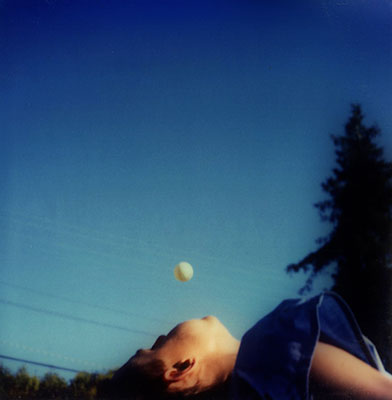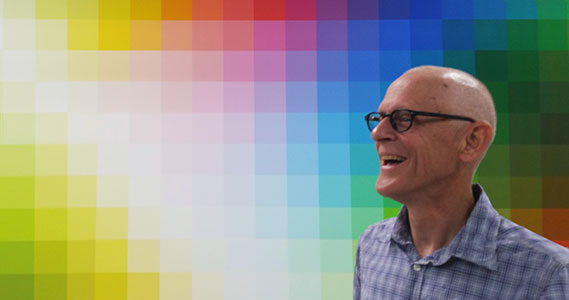“What is Music But Organized Noises?”
An Interview with Composer Mark Trayle

https://soundcloud.com/marktrayle
viralnet:: Hi Mark- Thanks for doing this interview with viralnet.net.
We’ll conduct the interview according to a rule. We’ll provide you 5 words over the course of the interview. Each word will constitute 5 fragmented micro-interviews. We will have a brief discussion after each word is given, then we’ll move on to the next word. We’ll finish the interview after you’ve responded to all 5 words.
Mark Trayle:: Right.
VN:: Ok, Let’s begin. The first word is…
NOISE
MT:: Noise is the source of new information. I think that’s a bad paraphrase from Gregory Bateson. I wouldn’t describe my own music as particularly noisy, at least I don’t think I fit into a noise ‘genre’. More important for me is the idea of using randomness as a control. I like to be surprised by my circuits, as if I’m playing with another rather unpredictable improviser.
VN:: A few questions, all at once. Do you think that noise holds the same oppositional stance today as it did for the likes of Luigi Russolo, Kurt Schwitters, John Cage, Lou Reed and DJ Screw? Has noise become just another commercial pop genre?
MT:: I think noise has lost some of it's ‘edge’, its ability to shock or transgress. Probably because its been pulled into the vortex of popular music and tamed a bit. Oppositional stances come and go, though, now more quickly than ever, so maybe someone will come up with the next round of transgressive noise soon.
I certainly employ noise in my music as part of the sonic palette. I think I use noise as a way to create sonic variety, to control aspects of the sound from moment to moment. Think of it as ‘slow noise’, aperiodic shapes that provide changes in timbre, frequency, etc.
VN:: If noise is a common component of contemporary music, pop, experimental or otherwise, and there are aspects of your palette that you’ve identified—‘slow noise’, aperiodic shapes—are these components and aspects derived from trends started by previous composers or are they a response to your own time and your own concerns?
MT:: I see it as being in a line of trends or concerns in experimental music. I come out of a John Cage ‘lineage’, my teachers were either students of or collaborators with or sympathetic to Cage and his work. It's an approach to organizing sounds in time, an approach that I think of as ‘lighter’, a lighter touch in organizing things. Let there be other influences on the music rather than solely the composer’s intention, or need to send a message. So after Cage further liberates noise as musical material, he starts looking for ways to put noise into the organizing of sounds in time. Hence…I Ching, dice-throwing, etc. Now we have a wider array of tools for organizing things—Markov chains, chaotic oscillators and the like. Still, you could problematize this and posit that those of us who use these alternative methods of control are no different than the composers of the past who used various systems to organize their music. Why can’t we just let sounds organize themselves? I think that was one of the original driving forces behind computer network music.
(see: Francisco Lopez's critique of John Cage at http://www.franciscolopez.net/cage.html)
TRADITION
MT:: Cage’s music came out of a very different time. There was a canon and it needed to be up-ended. Or appended. There was something that could be opposed…something monolithic. (There are parallels to this in jazz and popular music). Now the world of contemporary and experimental music is rather messy. Rhizomatic. What would you oppose? I don’t think there’s any point to taking an oppositional stance to Top 40 music. It is what it is.
There are so many sub genres of music. There was an article in The Guardian recently. Someone got hold of Pandora data and calculated that there were some huge number of genres. Pauline Oliveros was included in a pop/folk sub-genre. Lines between contemporary/experimental music and pop music forms are getting blurrier. By the time you’ve created a work that’s in opposition to another genre or work, it’s already morphed into something else.
VN:: Is the morphing and the sub-genres mostly a result of artist’s strategies and intent or is it an inevitable consequence and condition of the market?
MT:: It’s both. Good music creators always listen outside of their area of expertise. And now there’s so much music available. Creators take things they like from one kind of music and graft it onto (or integrate it with) their own.

CHANGE
MT:: So cultural conditions have changed since Cage took a stance on the use of noise in music. It has changed since the generation after Cage (thinking of the Sonic Arts Union here, James Tenney, Pauline Oliveros, Fluxus, etc.) took cultural conditions as their opposition (as opposed to purely musical ones). I think the musicians in my generation, the students of Ashley, Behrman, Lucier, etc., have not been on the lookout for something to oppose. I think the idea has been to subvert rather than oppose. The focus on performance interfaces, the re-purposing of consumer and military-industrial electronics for performing live electronic music, that's one direction this subversion has taken. The adoption of microcomputers in the late 1970s by people like John Bischoff, Tim Perkis, and Jim Horton had a two-fold function—an opposition to the perceived sterility of computer generated ‘tape music’ and the hacker’s intention to subvert military-industrial tools for their own purposes. I could cite more examples.
VN:: Subversion could be the next word…but it’s not. We’ll change gears a bit…the next word is—
BEAUTY
MT:: I’ve had periods where I foreground process (the ‘slow noise’ I was talking about) and the sound of that process is almost an afterthought. Recently I’ve gone in the other direction. I’ve searched for beautiful sounds first and then made a process (or processes) to carry those sounds along in time. I’ve been using a more colorful sound palette. Not to contradict myself, but in a way that’s a kind of an oppositional response to minimal electronica and micro sound. (So are we talking about a constant interplay between opposition and subversion here?) I really enjoy working in the Berlin minimalist ‘style’, but I can’t honestly say I came by that through the same critical processes that my Berlin friends did. Nevertheless, it’s sonic surfaces and discipline of gesture that have really fascinated me. I don’t see a reason not to do it. And I don’t see a reason not to make something more colorful and hyperactive.
VN:: It sounds like you just described your personal compositional strategy. You’re also pointing out that all of our practices will morph over time and may bend according to the winds of culture. So, on that note, I’ll leave you with the last word.
SPONTANEITY
MT:: Taking the eagle’s eye view of making live electronic music for the past 30 years, I see a focus on spontaneity. I started with analog synths in the 70’s and found them to be too slow, that is, I couldn't do the ‘turn on a dime’ kind of gestures and directions that great improvisers could do. Patching with cables takes a lot of time. Using the computer was a way to make an instrument that could fit in a context of spontaneity. The paradox is…unlike an acoustic instrument you have to program all that spontaneity! Still, over time it was an improvement. The next step was connecting computers and letting surprise arise from complexity. Now I’ve made a workable middle ground, a simple network of a hybrid digital-analog synthesizer and a computer. With a light touch on the programming and the unpredictability of the synth, I have a good source for a colorful palette and a generator of surprise.
VN:: To wrap up…It sounds like the script you would give emerging composers goes something like this—
Make noise that leads to the subversion of beauty and tradition through a process of change. Leave room for the condition of inevitable spontaneity. Generate surprise.
Did I get it?
MT:: Couldn’t have said it better myself.